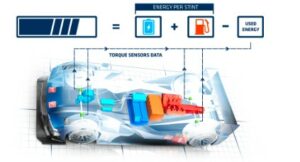
Time penalties are a critical aspect of motor racing, serving as a means of enforcing rules, maintaining fairness, and ensuring safety on the track. In this comprehensive guide, we’ll delve into the world of time penalties in racing, exploring their significance, implementation, and impact on the sport. From Formula 1 to local dirt track events like those at Thunderbird Speedway, we’ll examine how time penalties shape the dynamics of competition and influence the outcomes of races.

The Role of Time Penalties
Time penalties are penalties imposed on drivers for infractions or rule violations during a race, with the aim of deterring unsafe or unsportsmanlike behavior and maintaining the integrity of competition.
Enforcement of Rules
Time penalties serve as a deterrent for drivers who engage in unsafe or unsportsmanlike conduct on the track, such as exceeding track limits, causing collisions, or ignoring flags and signals. By penalizing offenders with added time to their race, authorities aim to discourage rule violations and promote fair and respectful racing.
Fairness and Sportsmanship
Time penalties help ensure fairness and sportsmanship among competitors by penalizing actions that give an unfair advantage or compromise the safety of other drivers. By penalizing rule infractions, race officials uphold the spirit of fair play and integrity in motorsport, fostering a level playing field for all participants.
Types of Time Penalties
Time penalties come in various forms, each tailored to the severity of the infraction and the impact on the race.
Drive-Through Penalty
A drive-through penalty requires the offending driver to enter the pit lane, drive through it at a predetermined speed limit without stopping, and rejoin the race. Drive-through penalties typically result from minor infractions or violations that do not warrant a more severe penalty.
Stop-and-Go Penalty
A stop-and-go penalty requires the offending driver to enter the pit lane, come to a complete stop in their designated pit box for a specified duration, and then rejoin the race. Stop-and-go penalties are typically imposed for more serious infractions or repeated offenses during a race.
Time Addition Penalty
A time addition penalty involves adding a specified amount of time to the offending driver’s race time. This happens after the race has concluded. Time addition penalties are often used for infractions that occur late in the race. Or for offences that do not allow for immediate enforcement, such as exceeding track limits.
Implementation and Enforcement
Implementing and enforcing time penalties requires vigilance, consistency, and adherence to established procedures and regulations.
Race Control
Control officials monitor driver behavior and track conditions throughout the race, using a combination of video footage, telemetry data, and on-track observations to identify rule infractions and assess penalties. Race control communicates penalties to drivers via electronic displays, radio communication, or electronic messaging systems.
Stewards’ Decisions
Race stewards, appointed by the governing body of the sport, review incidents and rule infractions reported by race control and determine the appropriate penalties based on the severity of the offense and the impact on the race. Stewards’ decisions are final and binding, with penalties applied immediately or after the race, depending on the circumstances.
Impact on Racing
Time penalties can have a significant impact on the outcome of races, influencing strategy, positions, and championship standings.
Strategy Adjustments
Teams and drivers must adapt their race strategies in response to time penalties. Working on factoring in the additional time or pit stops required to serve the penalty. All while minimizing the impact on their overall race performance. Strategic decisions such as when to serve a penalty and how to regain lost positions. These can determine the success or failure of a race.
Championship Implications
Time penalties can affect the championship standings by altering the points distribution among drivers and teams. A time penalty incurred by a championship contender can have far-reaching consequences. This, potentially influencing the outcome of the championship and shaping the narrative of the season.
Thunderbird Speedway: A Case Study
Thunderbird Speedway, a beloved dirt track venue known for its thrilling racing events, also enforces time penalties to uphold fairness and safety on the track.
Fair Play and Integrity
Thunderbird Speedway emphasizes fair play and integrity in its racing competitions, imposing time penalties on drivers who violate track rules or engage in reckless behavior. By enforcing penalties consistently and transparently, Thunderbird Speedway maintains the spirit of sportsmanship and camaraderie among competitors.
Safety First
Safety is paramount at Thunderbird Speedway, with time penalties used to penalize actions that endanger drivers, officials, or spectators. By holding drivers accountable for their actions and enforcing penalties when necessary, Thunderbird Speedway prioritizes the well-being of everyone involved in its racing events.
Conclusion: Upholding Fairness and Safety
Time penalties are a fundamental aspect of motor racing. Actively serving as a tool for enforcing rules, maintaining fairness, and promoting safety on the track. From Formula 1 circuits to local dirt tracks like Thunderbird Speedway. Time penalties play a crucial role in shaping the dynamics. The complex dynamics of competition and upholding the integrity of the sport.
Implementing and enforcing time penalties consistently and transparently. Through this, racing authorities ensure that drivers adhere to the rules and respect their fellow competitors. Effectively creating an environment where fair play, sportsmanship, and safety are paramount. As racing continues to evolve, time penalties will remain a vital component of the sport. Actively contributing to the thrill, excitement, and spectacle of motorsport for fans around the world.







